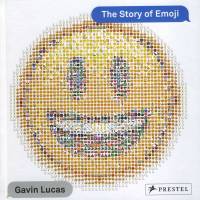There are two types of people in the world: those who fret about the invasion of emoji, and those who seem to have umbilical attachment to them. Gavin Lucas is most likely in the second category. Though his book is called "The Story of Emoji," a more accurate title might have been "The Story and Possibilities of Emoji," since roughly two thirds of his book showcases projects by designers, writers and artists who are pushing the possibilities of the icons. This includes an emoji campaign to get young people voting and "Emoji Dick," a crowdsourced emoji translation of "Moby Dick," which has now been added to the U.S. Library of Congress' collection.
The Story of Emoji, by Gavin Lucas
192 pages
Prestel, Nonfiction.
Sometimes Lucas' analysis of these projects goes no deeper than the press releases, such as when he writes about U.K. clothing retailer Primark's emoji T-shirts. The book is better when Lucas digs a little deeper to explain the back story to the pictographs, linking the present set of symbols to the hieroglyphics used in ancient times and the fleurons favored by printers during the Middle Ages.
He also explores the story of the 12-by-12-pixel icons created by Shigetaka Kurita, the inventor of emoji. That original set of 176 symbols, released in Japan in 1999 by Docomo, looks like it's from the Stone Age when compared with today's set.
"Emoji are a communication tool," says Kurita in an interview with Lucas, "so they will likely continue to change as a result of their surrounding environment. Of course, I don't think that emoji will ever disappear."


















With your current subscription plan you can comment on stories. However, before writing your first comment, please create a display name in the Profile section of your subscriber account page.